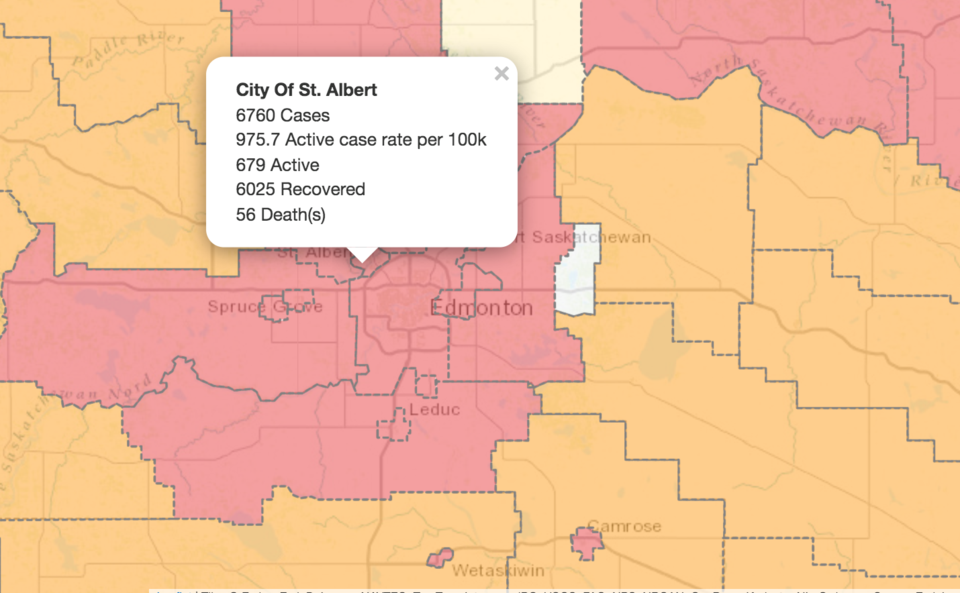St. Albert's active COVID-19 cases have fallen by 379 since last week.
Provincial data reported Tuesday showed 679 active COVID cases in the city, current from Jan. 24. One more St. Albertan has died from the virus. Fifty-six people have died from COVID in the city
Sturgeon County also saw a drop in active COVID cases. Data from the province showed 232 active cases of the virus compared to 266 cases reported last week.
Fifteen people in the county have died from the virus.
Active COVID cases in Morinville are at 84, while the province reported one more person has died from COVID. Fourteen people have died from the virus in the town.
Data from the province reported Tuesday showed 1,377 people were hospitalized with the virus, an increase of about 30 per cent over the past week, with 111 people in ICU.
Data from the province shows Alberta-wide active COVID cases dropped to 51,157.
The province reported 62 more deaths from the virus since last week. Province-wide, 3,483 people have died from the virus.
In a Jan. 25 COVID update Minister of Health Jason Copping said the health-care system is under strain, but the province can manage it.
Copping said the province is monitoring the level of COVID in wastewater.
“Most of the centres we're monitoring, COVID-19 levels in our wastewater are starting to drop. In some cases, such as in Edmonton, COVID-19 levels in the wastewater there have been dropping for nearly two weeks,” said Copping.
Copping said these are early indications transmission and new cases may be slowing.
However, hospitals are under strain, especially in larger centres, he said.
Copping said the province and Alberta Health Services have activated contingency plans to prepare for additional burdens Omicron may cause.
“These contingency plans include maximizing capacity with pandemic response units, adjusting staffing, and establishing community COVID clinics where appropriate,” said Copping
Copping said Albertans have been curious about the province's plans with Paxlovid, and the province has been working on implementation details.
“Because there is a limited supply, and because it is a medication that causes some side effects, only specific groups of Albertans will be eligible to get it. There's a process in place to make sure those who need it the most will be first in line,” he said.
Paxlovid will be available to Albertans who meet the requirements starting Jan. 31.
Alberta's chief medical officer of health Dr. Deena Hinshaw spoke about technical details in updating COVID numbers on the province’s website.
“The numbers we post online rely on 10 different data systems with millions of different data points cross referenced and quality checks every day.
“The infrastructure necessary for this to go smoothly has been built and enhanced over time. But just like any other system, sometimes one of the components has a technical issue that has a ripple effect throughout the whole system,” she said.
The systems are now back up and running.
Hinshaw also said, as of Jan. 24, 18 of the more than 2,500 schools in Alberta had shifted to temporary at-home learning to address operational challenges.
“This means that less than one per cent of schools are on temporary at-home learning. All requests from schools to shift to add-on learning have been approved,” she said.
Hinshaw stressed the importance of vaccines.
She said a recent analysis showed that adult vaccination affects the chances of very young children getting infected with COVID 19.
“Children in households where no adults have been vaccinated have a one-and-a-half times greater chance of being hospitalized with COVID-19 compared to children in households where all adults are fully vaccinated,” she said.
Hinshaw also spoke about booster shots.
“Third doses help not just the person receiving it, but those around you, as well as doses limit the chance of getting COVID and spreading the infection to others.”




